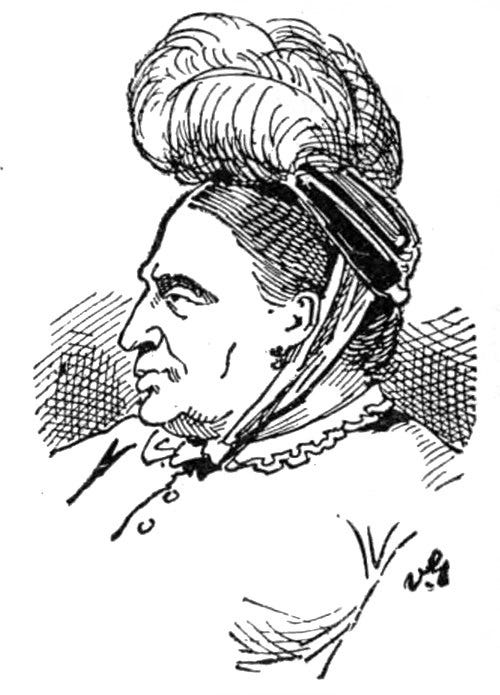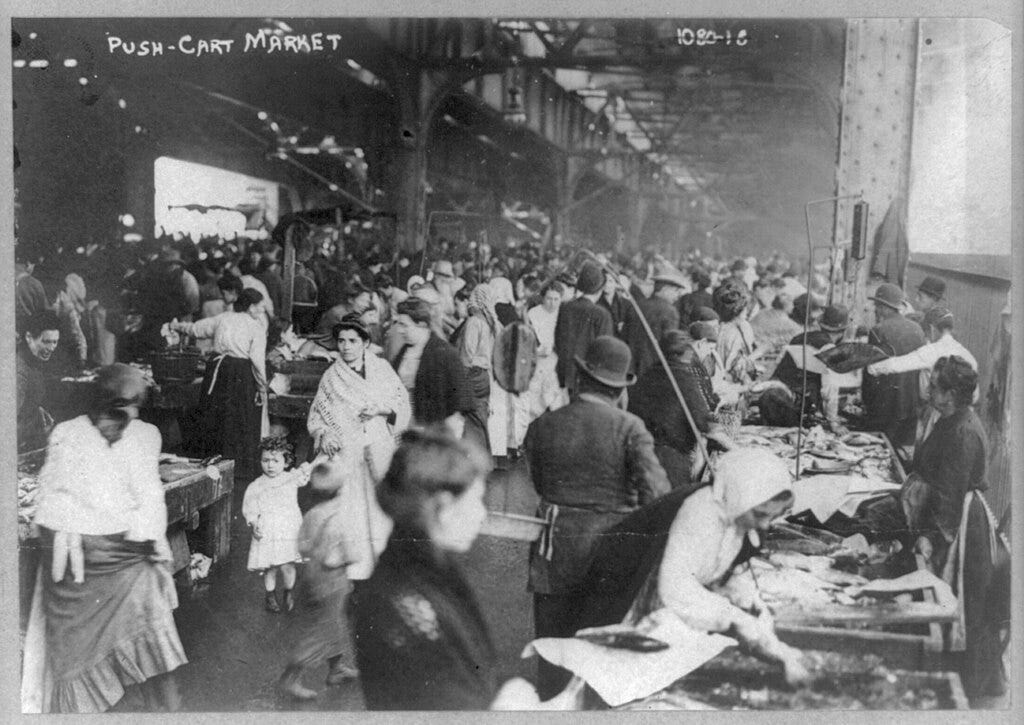She was a society hostess, a respected businesswoman, and one of the most successful criminals in U.S. history.
Born in 1825 the daughter of a Jewish peddler in Kassel, Germany, Fredericka Mandelbaum came to New York City in 1850 seeking the American Dream. What she and her husband, Wolf, found was a city teeming with impoverished immigrants. But Fredericka saw something else — opportunity.
The couple settled in the Lower East Side neighborhood known as Little Germany. Wolf was also a peddler, and Fredericka helped him scratch out a living in the push-cart markets of one of the most crowded slums in the world. Their responsibilities swelled as they added four children to their family.
In Germany, Jews had been barred from craft guilds and pushed into trades as peddlers, tailors. and pawnbrokers. In America the chances for a poor woman to rise above subsistence were not much better — if she lived within the law. For those with gumption and daring, there were possibilities.
Already immersed in buying and selling, Fredericka spotted the advantages of becoming a “fence,” a receiver of stolen goods. The risks were minimal for those in the know, the potential profits attractive. The Mandelbaums acquired a storefront where they carried on a dry goods business. Wolf remained a minor player in the illicit end of the enterprise, but his wife flourished.
The New York Times called her “the nucleus and center of the whole organization of crime in New York City.” If organized crime means anything, it means running a criminal enterprise as a business. Mandelbaum did so decades before the more famous gangs and mafia “families” of the 1920s.
During the 1860s, she recruited specialists, women practiced in lifting goods from fancy department stores and getting away with bolts of silk or cashmere shawls concealed under their voluminous skirts. Mandelbaum also knew clerks in the stores who, for a cut, would look the other way. She guaranteed that her operatives, if arrested, would be bailed out and provided a lawyer.
Her reputation spread through the underworld as the person to see if you wanted to convert anything to ready cash. Burglars, pickpockets, jewel thieves, safe crackers, confidence men, and others became her friends. So did policemen, judges and city officials.
New York City Chief of Police, George Walling, noted that “she attained a reputation as a businesswoman whose honesty in criminal matters was absolute.” She hosted dinner parties where an art thief might meet a reliable second-story man who could help with a job.
She succeeded because she filled a necessary role as go-between. Her customers included middle-class folks on limited budgets and businessmen looking to cut costs. Although seeking bargains, they did not want to associate with what were called “eye gougers and mayhem artists.” Her shop provided a safe and respectable setting for illegal transactions.
Her business blossomed. She traded in everything from “silk to securities.” She once bought and resold fifty thousand stolen cigars. She had interests across the country, in Canada and even in Europe.
With her gains, Fredericka invested in real estate and hired a cadre of craftsmen who could melt down pilfered jewelry and refashion it or remove identifying marks from cloth and garments. She worked hard to serve customers. She provided jobs for others, especially women. And she was generous with charities, including her local synagogue. The Brooklyn Daily Eagle called her the “most respectable and philanthropic receiver of stolen goods in New York.”
Her success reflected many aspects of the period in America that Mark Twain called the Gilded Age. This was the era of bare-knuckle capitalism. The magnate Cornelius Vanderbilt, accused of sharp dealing in 1865, boomed “Law! What do I care about law?” The plutocrats of the day flaunted their wealth and had few scruples about how they came by it.
How did the “queen of crooks” get away with it? Laws about fencing were ill defined and required a connection to a particular theft. The police were ineffective and rarely investigated crimes in the slums. Victims were often unwilling to press charges. Almost everyone, from beat cop to judge, was on the take. And Mandelbaum had two of the smartest and most crooked lawyers in the city on permanent retainer.
She invested her growing capital in larger criminal enterprises. She put up $3,000 ($75,000 in today’s currency) to back the robbery of the Ocean National Bank in Manhattan. Professional thieves spent half a year casing the joint. They recruited an inside man, rented a room below the bank, broke through the ceiling, opened the vault, and got away with an estimated $800,000 in cash and securities. Fredericka took a healthy cut and helped to launder the loot.
It was only in the 1880s that Mandelbaum finally drew the attention of the authorities. The New York City district attorney hired Robert A. Pinkerton of the famous private detective company to investigate her. He planted a man inside her gang to gather evidence. She was arrested in 1884, at the age of 59.
But “Mother” Mandelbaum, as the papers called her, was not done yet. She was able to put up the extraordinarily high bail of $10,000. And although Pinkerton initiated round-the-clock surveillance, she slipped out of town and made her way to Canada. She lived out her life in Hamilton, Ontario, and died of natural causes ten years later. It was said that quite a number of pockets were picked at her funeral.








I'd never heard of her! The narrative makes me think music needs to be set to this. Makes me think of The Beggar's Opera - Three Penny Opera - Opera del Malandro (sp??) trajectory.
Holy crap, what an amazing lady who managed to have the American Dream for a very long time. I enjoyed this story Jack. You tell interesting history and I love it. Thanks